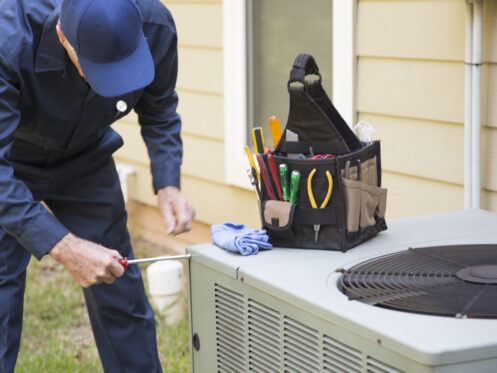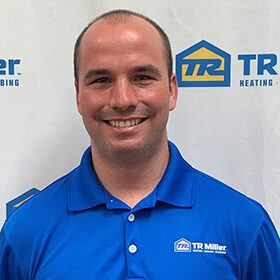Air conditioners are an essential appliance in modern-day homes and businesses. They help keep homes warm and safe during the hot summer months. For this reason, when a problem arises with an air conditioner, such as the air conditioner constantly running, it is an understandable cause of concern. An air conditioner that is constantly running can lead to increased energy bills and higher energy consumption. It is also an indication that there is a problem with your air conditioner system. The following are some reasons why your air conditioner is constantly running.
1. Your Air Conditioner Is the Wrong Size for Your House
The British thermal unit (BTU) measures the amount of energy required to change the temperature in your home. Every air conditioner has a set BTU. The larger the air conditioner, the larger the space it is designed to cool. You want your air conditioner to emit around 20 BTUs for every square foot of the area it is cooling. If you have a smaller room with between 50 and 250 square feet, you need an air conditioner with between 5,000 and 6,500 BTUs. Conversely, a larger room that’s between 350 and 650 square feet should have an air conditioner with between 9,000 and 12,500 BTUs.
Issues With an Air Conditioner That Is Too Big
If your air conditioner is too big, it runs for a short time, turns off because it cools the room quickly, and then turns back on. The air in the room might feel cool in some areas, but the air conditioner has not run long enough to bring the entire home down to the desired temperature and remove the moisture. This process is called short cycling. It might seem like your air conditioner is constantly running. It takes a lot of work for your air conditioner to turn itself on and off repeatedly, leading to more wear and tear and frequent breakdowns. This also drastically reduces the lifespan of your air conditioner.
Issues With an Air Conditioner That Is Too Small
If your air conditioner is too small, it runs for a long time because it desperately attempts to bring your home down to the desired indoor temperature. But no matter how hard it tries, it never reaches that goal. Just like an air conditioner that is too large, one that is too small will also short cycle. It may bring the temperature in a part of the home down to your desired temperature, but quickly, the house heats back up, and the air conditioner needs to activate again.
Both an air conditioner that is too large and one that is too small can lead to your air conditioner constantly running. You can avoid this issue by working with your HVAC technician to find the right size air conditioner for your home.
2. Your Air Filter Needs to Be Replaced
If your air conditioner is constantly running, it could be because you have a dirty air filter. As your air conditioner runs, it continuously pulls in air from your home, passing it through the filter before blowing it over the evaporator coil and redirecting it into your home. As dirt and dust build up on the air filter, airflow becomes restricted. Your air conditioner will constantly run because the cool air will not reach different areas of your home but will be blocked by the dirty air filter.
It’s recommended that you replace your air filter every 30 to 90 days based on the manufacturer’s recommendation. This task should be included in your annual air conditioning tune-up. During the tune-up, discuss with your HVAC technician how frequently they think you should replace your air filter based on the air quality where you live, the pets you have in your home, and other factors. You can also explore options with them to find the right filter for your needs.
3. Your Thermostat Is Not Working
Your home’s HVAC system relies on the thermostat to provide an accurate temperature reading and ensure that any adjustments you make to the air conditioning unit’s temperature are transmitted effectively. If your thermostat is malfunctioning, your air conditioner will not function properly.
The air conditioner is designed to turn itself off and on based on the instructions it receives from the thermostat. If you have shorted thermostat wires, a broken thermostat, a thermostat with a low battery, or one that is otherwise damaged, your air conditioner may never receive the signal to turn itself off. If you suspect your thermostat is the issue, the simplest thing to do is check the batteries and replace them if necessary. Additionally, ensure that your thermostat is set to the correct cooling mode. For example, some thermostats offer the option to have the air conditioner run continuously or to operate automatically when the desired temperature is not met. If the thermostat is switched on, your air conditioner will run continuously.
If you’ve checked these basic things and your air conditioner still does not turn off, it’s time to contact your HVAC technician. They may be able to assist you with wiring issues, programming problems, or other issues affecting communication between the thermostat and the air conditioner. They might even suggest replacing the thermostat with a new one.
4. Dirty AC Coils
The condenser and evaporator coils in your air conditioner are crucial to its function. If either of these coils becomes dirty, it can cause your air conditioner to run inefficiently. Your air conditioner will struggle to reach the desired temperature due to the buildup of dirt, grass, or debris, and it will run nonstop.
Although there are do-it-yourself options for cleaning evaporator and condenser coils, it’s not recommended. These coils serve as the heart of your air conditioner and are made of copper. It is best to inform your HVAC technician about the issue, and once it is resolved, ensure that coil cleaning is a part of your annual professional HVAC maintenance program.
5. Dirty Ductwork
After your air conditioner extracts the heat and humidity from your home’s indoor air, the blower pushes the cool air through the air duct system, distributing it throughout your home. However, if there is a leak or any blockage, this could restrict airflow. Since the cool air is not reaching different parts of your house, the thermostat may never signal to the air conditioner that it needs to shut down.
Take a moment to ensure that nothing is blocking the vents or air returns connected to your air conditioner. You may need to move furniture or other items blocking these air openings. Ensure that the dampers of your vents are completely open. If that does not work, consult your HVAC technician about inspecting your home’s ductwork. They may recommend a complete cleaning of the ductwork once every few years and identify areas where the joints have come loose, or holes in the ductwork are causing leaks.
Plumbing and HVAC Services in Plainfield
At TR Miller Heating, Cooling & Plumbing, we are happy to offer professional plumbing and HVAC service in Plainfield, IL. We have been servicing our area since 2008. We are a family-owned business backed by the experience of more than three generations. We pride ourselves on offering straightforward pricing, the latest technology, and customer care excellence. We are members of the ACCA and proudly hire NATE-certified technicians.
Our services include HVAC installation, maintenance, and repair. We install heat pumps, boilers, and ductless mini-splits. Our plumbing services include tankless water heaters, traditional water heaters, sump pumps, and toilet repair and replacement. Contact TR Miller Heating, Cooling & Plumbing today and feel confident that you are getting the right solution and top-quality workmanship.


